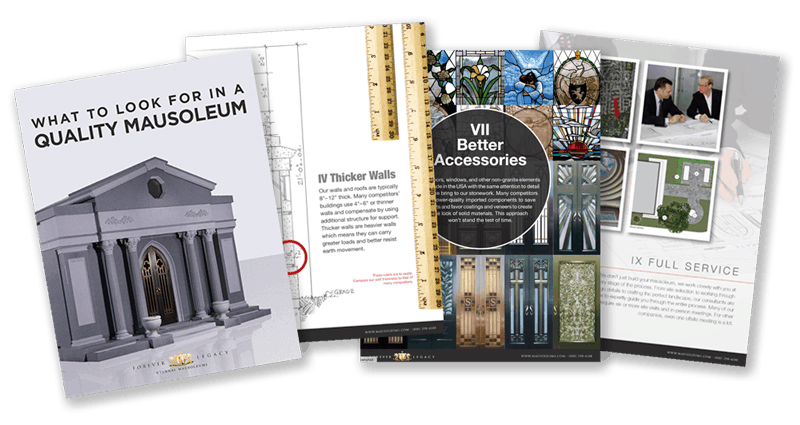Belmont Mausoleum
Gothic
Oliver Belmont
November 12, 1858 – June 10, 1908
Alva Vanderbilt Belmont
January 17, 1853 – January 26, 1933
40 53’12.75"N 73 52’36.34"W
The Belmont mausoleum is an almost exact full-scale replica of a famous building, the Chapel of Saint-Hubert in the Queens section of Chateau Amboise in France’s famed Loire Valley. The Chapel was designed by Leonardo DaVinci in the “Gothic Flamboyant” style in the early 1500’s. DaVinci spent the last three years of his life in the village of Amboise as a guest of Francois I. Upon his death in 1519, DaVinci’s remains were placed in a sarcophagus in the chapel he designed. The Belmont version was designed by the architecture firm of Hunt & Hunt (1908) and fabricated in limestone by Barr Thaw & Frazer.
Architect R.H. Hunt, in designing the relief panels above the entry of the Belmont mausoleum made very few changes from the originals on the Chapel of St. Hubert in Amboise, France. The central figure in the lintel is a stag with what looks like a crucifix growing from its head. The crucifix is actually supposed to be wedged in its antlers and represents the stag that caused St. Hubert to convert to Christianity. Also occupying the panel are St. Hubert, patron saint of the hunt, St. Christopher, St. Anthony, dogs, angels, cherubs, and various woodland creatures. The tympanum’s central figure is the Madonna and Child flanked by the kneeling figures of Charles VIII of France and his Queen, Anne of Brittany.
Oliver Hazard Perry Belmont who rests beneath the protruding gargoyles of his mausoleum was hardly a religious man. O.H.P. Belmont’s great love was horses. He was the founder of the Belmont Raceway. He was also a financier and a U.S. representative in Congress from New York. After O.H.P. died, following an attack of appendicitis, his wife Alva Vanderbilt Belmont (she was previously married to William Vanderbilt), used large sums of her fortune to support the growing suffragette movement. Alva lived a long life, and, after her death in Paris in 1933, her remains were interred in the Belmont mausoleum. Interred along with Alva is the suffragette banner she carried, inscribed with the words, “failure is impossible”. The banner hangs inside the mausoleum. As early as 1917, Alva Belmont opened the mausoleum to the public and today it is frequently opened for tours given by the Friends of Woodlawn Cemetery.
R.H. Hunt and his father Richard Morris Hunt were partners in an architectural firm that specialized in designing residences for the rich and famous. Richard Morris Hunt designed residences for Alva when she was a Vanderbilt and R.H. Hunt designed this mausoleum for her when she was a Belmont. She may have switched husbands but she knew a good architectural firm when she found one.
Text and photos © Douglas Keister Visit Doug’s Author Page
[address cemetery=”The Woodlawn Cemetery” street=”East 233rd Street” city=”Bronx” state=”New York” zip=”10470″]

